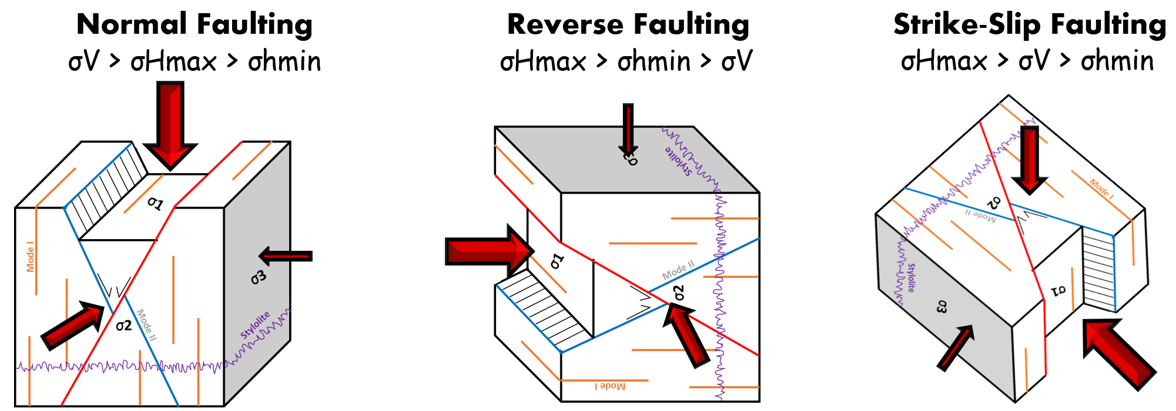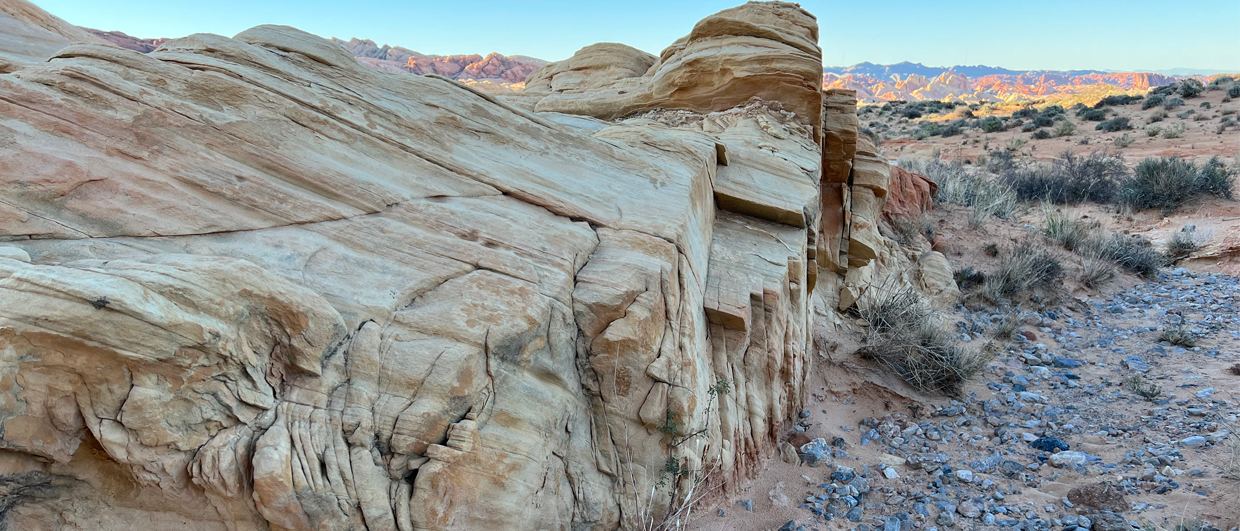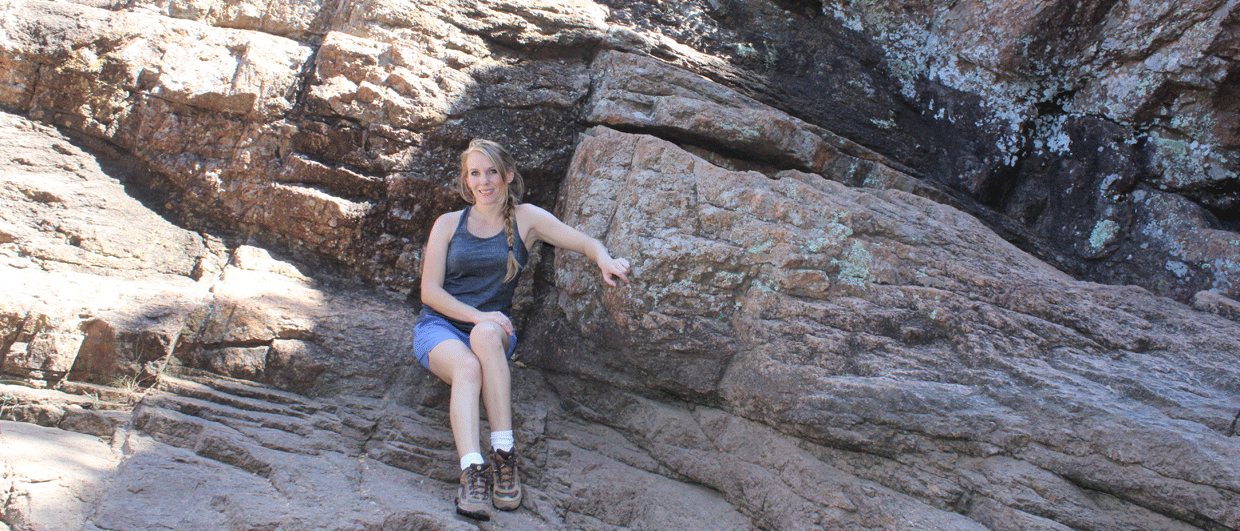Anderson’s theory classified faults based on the orientation and magnitude of the principle stresses. The magnitudes are defined by S1 (maximum stress), S2 (intermediate stress) and S3 (minimum stress). The orientations are defined by SV (vertical stress), SHmax (maximum horizontal stress), and Shmin (minimum horizontal stress). Sigma (σ) is also commonly used in place of the “S”. The cubes shows the three basic fault regimes that can be defined using the Andersonian Fault Theory. When S1 is vertical, it is a normal faulting regime. When S1 is horizontal and S3 is vertical, it is a reverse faulting regime, but when S2 is vertical it is a strike-slip regime.
Angles
A general rule of thumb is that the conjugate faults (red and blue lines in the cubes) form at about 60° to each other, which is +/- 30° to S1. This rule remains true for each type of faulting regime as S1 becomes rotated from vertical to horizontal. The strike of the faults (red and blue lines) also remains parallel to S2, and perpendicular to S3. Structural geologists tend to measure the dip of a fault plane from horizontal, therefore a normal fault would form close to 60°, a reverse fault close to 30°, and strike-slip fault close to 90° degrees using the basic Andersonian Fault Theory. However, when measuring fault strike and dip relative to S1, S2, and S3, the relationships remain the same regardless of the faulting regime.

Shear fractures
Faults are also commonly classified as Mode II fractures, “shearing” mode. In contrast, Mode I fractures are known as “opening mode” fractures (orange lines in cubes). These also strike parallel to S2 and open in the direction of S3 since it is the minimum amount of stress to overcome. Mode I fractures can go by many names including tension fractures, extension fractures, joints, and veins. Along with faults, opening mode fractures are great kinematic indicators for paleo-stress orientations.
Pressure dissolution
Stylolites are also great kinematic indicators for stress directions. These are pressure dissolution features that form perpendicular to S1. These types of fractures are common in carbonate rocks but can also form in other rock types. They are often classified as Mode IV “closing” fractures. The serrated surfaces develop as soluble minerals dissolve under high stress, which can then be deposited elsewhere, leaving behind the geometry seen as purple “squiggles” in the cubes.
By understanding the basic relationships between fault and fracture orientations and stress, a geoscientist can begin to predict the stresses or paleo-stresses that created observable fracture patterns. Alternatively, if the stresses are known, then a geoscientist can predict fracture patterns.
Do you want your own Andy Cube? Visit turkotectonics.com





